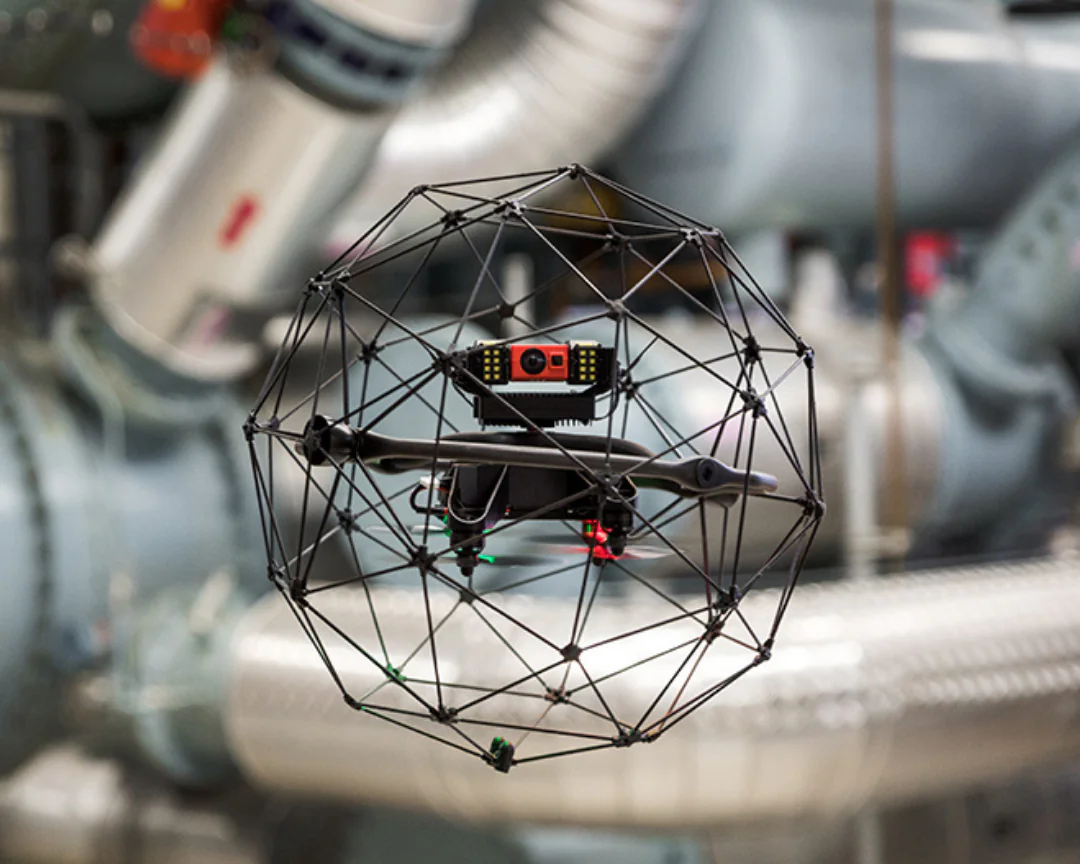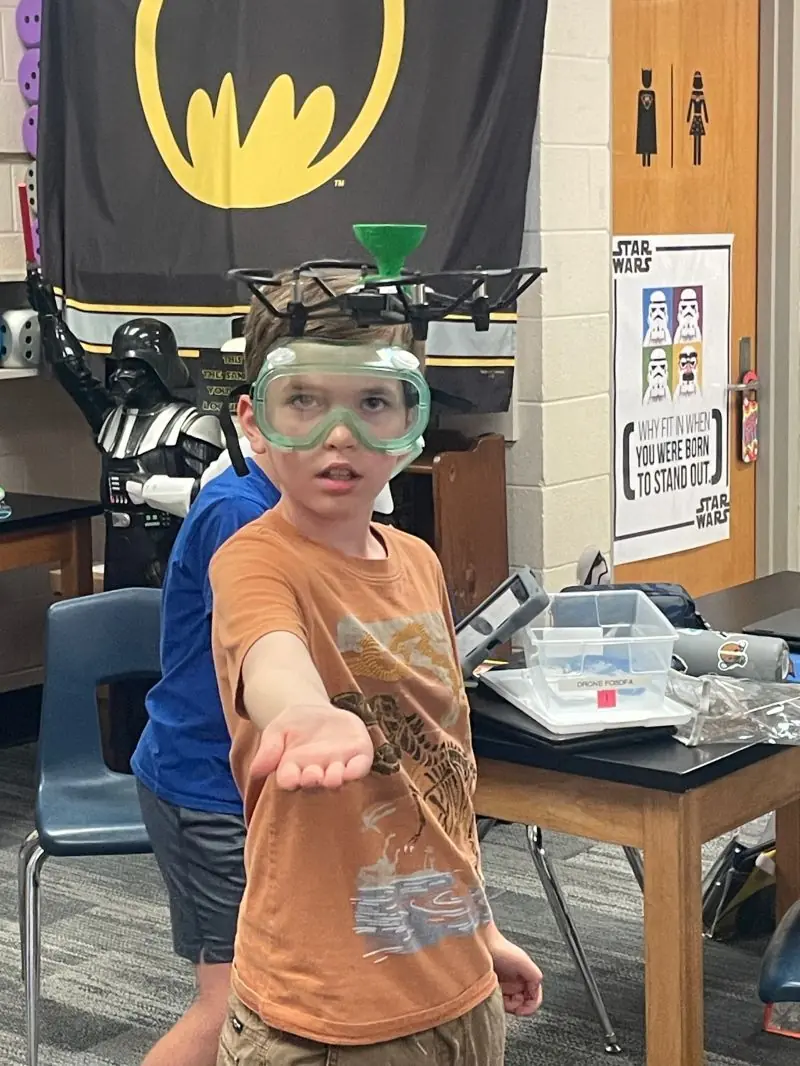By now, the idea of using drones to get students excited about STEM isn’t new.
In fact, drones have become widely embraced as a great way to engage students in STEM subjects by providing a powerful intersection of diverse disciplines such as coding, physics, engineering, and mathematics.
Most approaches to teaching STEM do a great job emphasizing one STEM discipline, but do so at the cost of neglecting others—one way of teaching STEM might have a strong emphasis on engineering but be weak on technological implementation, while another may provide a great avenue for teaching real-world math but doesn’t support actual engineering tasks, and so on.
But a drone STEM curriculum doesn’t have these gaps. Using drones, teachers can help students study an array of STEM topics, all at the same time. Unlike a hypothetical physics equation, for example, which may only require students to imagine an experiment, flying a drone allows students to create equations about hypothetical scenarios and then test them in real world scenarios using their drones, providing immediate feedback on whether their equations worked.
Despite a general consensus that drones and STEM are a great match, most of the dialogue we see these days about drone education centers around high school students. But the truth is that fourth and fifth graders can also get several benefits from studying STEM with drones—including an early introduction to possible career paths.
For teachers working with fourth and fifth grade students, using a drone education curriculum can be a powerful way to grow student interest in STEM.
[Related read: 8 Keys to a Successful Drone STEM Curriculum]
There are a few reasons for this. The first is that a drone curriculum has a wow factor for elementary school students, just like they do for high school students. Using drones, teachers can get students to focus on a project that involves disciplines they might not otherwise be interested in, such as science, engineering, or math.
When students understand that learning these skills can help them fly a drone better, or help them learn how to fix it, their mindset often changes from feeling like they’re doing dry, abstract schoolwork to feeling like they’re embarking on a challenging adventure.
Another way fourth and fifth graders benefit from studying STEM with drones is that they can provide hands-on, interactive learning opportunities for kinetic learners who need to move around and learn through trial and error.
When students work on engineering code that will make a drone fly, they have to consider the underlying physics that will enable the operation to work. If the equations aren’t accurate, the drone won’t fly. It’s that simple.
But instead of being discouraged and feeling like walking away, the lure of doing it right and getting the drone to fly is a strong one for students, and can motivate them to try again where other, dryer frameworks might leave them feeling uninspired.
The overarching idea is that students will learn through failure by actually making something that is meant to operate in the world. Once they succeed, they’ll have an operational drone that can be used for work, for study, and for fun!
Talking to Fourth and Fifth Graders about Careers in Drone Technology
Drones aren’t just a useful tool for teaching STEM subjects—they also present an array of possible career paths for young learners.
On its surface, the idea of introducing elementary school students to any potential career track may seem premature. But at Drone Legends we’ve seen that introducing children to drone technology and how it’s used for work can help them imagine future careers they didn’t even know existed, and imagining these future careers can inspire them to learn STEM subjects today.
We often limit ourselves to believing that the study of drones and STEM subjects is only for high school students. Similarly, we often limit our thinking around who should be participating in CTE (Computer Technology Education) to high school. But drones and CTE go hand in hand, and fourth and fifth graders are in a prime position to start learning about potential careers in these developing fields.
Another exciting aspect of careers in the drone industry is that, as drone technology develops, new types of jobs are being created all the time. (Of course, the drone industry also has the kinds of jobs you’ll find in any industry, such as jobs in marketing, human resources, or sales, as well as jobs for software and hardware engineers.)
Here’s a list of just a few ways that people are making a living flying drones today:
- Construction workers are using drones to monitor the progress of construction projects with photos, videos, and 3D models.
- Farmers are using drones to monitor their crops and improve their yields.
- Firefighters and police officers are using drones to keep people safe, put out fires more quickly, and even catch suspects.
- Inspectors are using drones for their maintenance work at power plants, oil and gas facilities, and in wastewater infrastructure.
- Mining operations are using drones to collect information about dangerous areas within mines to help keep people safe. They’re also using new, ground-breaking technology that allows them to create 3D models in real time, providing accurate surveys of the interiors of mines in record time.
- Nuclear power plants are using drones equipped with dosimeters to fly into dangerous areas and collect information about the level of radiation present, allowing plant personnel to stay safe and avoid exposure to radiation.
- Real estate agents are hiring drone pilots to get photos, videos, and 3D models of the properties they’re selling.
- Teachers are using drones in the classroom to get students excited about STEM—and careers in the drone industry!
These are just a few examples of the kinds of jobs people are doing in the drone industry today. The truth is, new types of work are being thought up every day.
For example, a nine-year old Drone Legends student, Arnav, realized he could use his drone to help his neighbors inspect their gutters for debris, to determine whether they needed to be cleaned out. The student was able to fly his drone up, check out the gutters, and show the owner of the house what he found without anyone having to stand on a ladder and potentially place themselves in harm’s way. The student used the slogan “‘Flying high drones, when you fly high you will not deny” for his business, and was able to establish a steady clientele in his neighborhood.
The Magic of Teaching STEM With Drones
Stories like these, in which elementary school students start imagining new types of work they can do—and even start doing it now, if they want to—are just one part of the value that drones provide students when they’re incorporated into STEM lesson planning. And this is true for fourth and fifth graders just as much as it’s true for high school students.
Learn more about the work we do to get students excited about STEM by using drones in the classroom.




